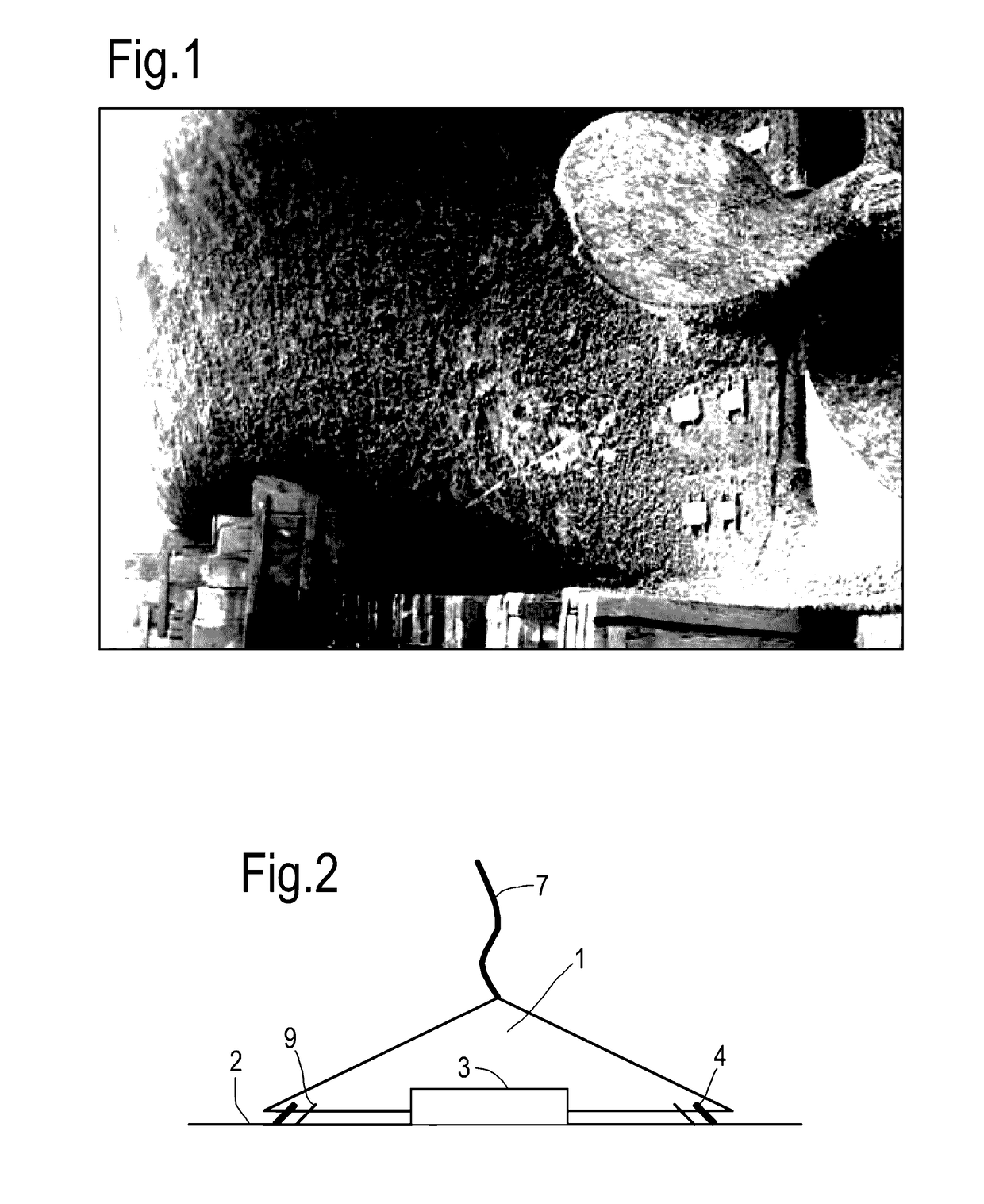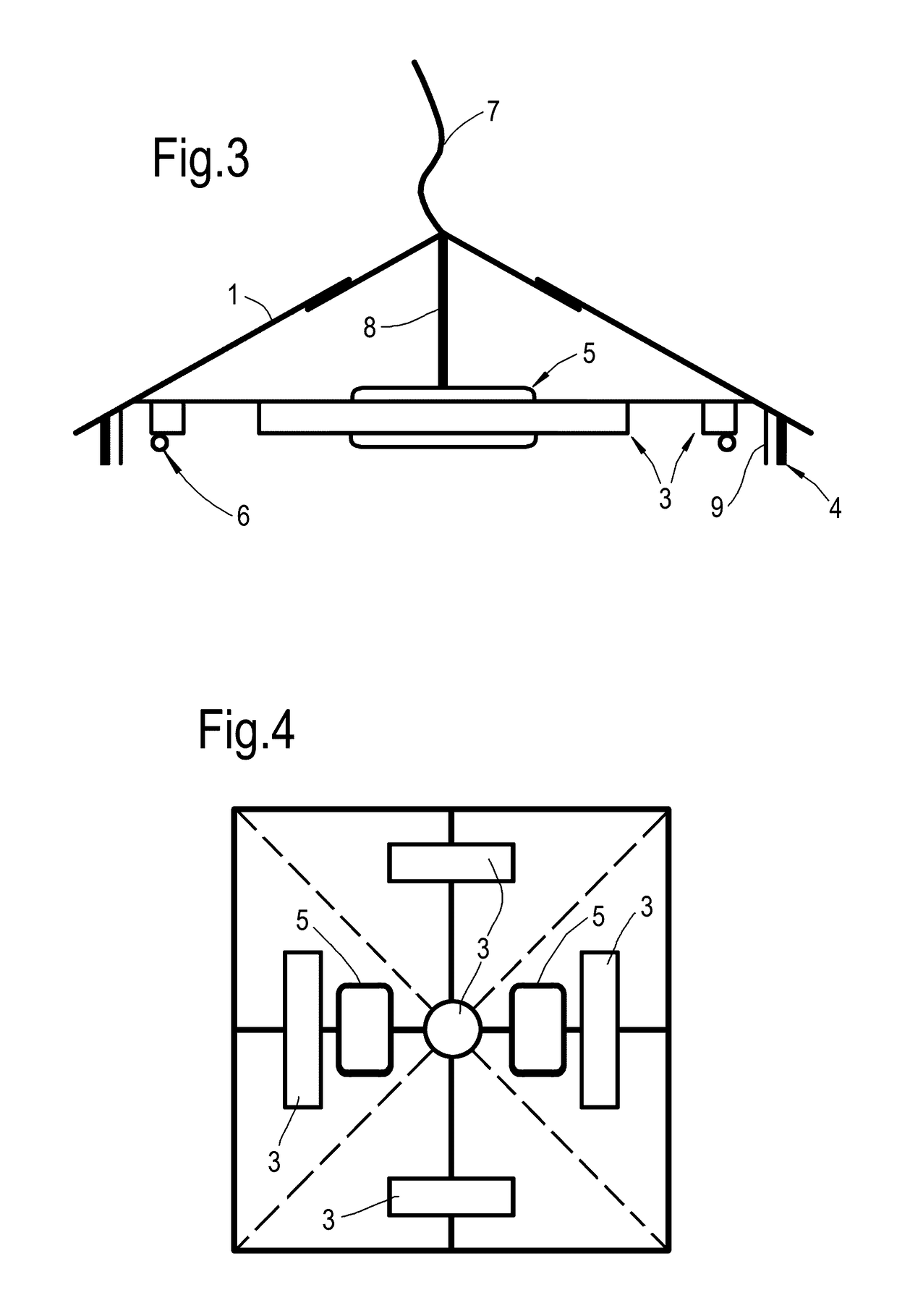Cleaning robot
a robot and cleaning technology, applied in the field of robots, can solve the problems of increasing the drag of the vessel hull, increasing the environmental damage of tbt paint, and increasing the build-up of biofouling, so as to reduce the equipment, reduce the drag, and the effect of streamlined operation
- Summary
- Abstract
- Description
- Claims
- Application Information
AI Technical Summary
Benefits of technology
Problems solved by technology
Method used
Image
Examples
Embodiment Construction
[0045]FIGS. 2 to 4 show schematically side, cross-section and bottom views of a robot according to the present invention. The robot has a housing 1 formed in the shape of a shallow pyramid. The base of the pyramid is located on the surface of the hull 2 of a vessel. Although depicted as a four-sided, square-based pyramid, other base configurations and numbers of sides can be used, or the housing 1 can be conical rather than pyramidal.
[0046]The housing 1 has a small internal angle at its base. This shape reduces drag forces imposed on the robot and allows the robot to be deployed while the vessel is moving, reducing the impact of the robot on the operational profile of the vessel. This approach also allows regular, frequent removal of biofilm from the hull 2, preventing hard-fouling from establishing, and helping to maintain optimum vessel efficiency over long periods of operation.
[0047]For example, the internal angle at the base of the housing can be in the range 5 to 25°, dependant...
PUM
 Login to View More
Login to View More Abstract
Description
Claims
Application Information
 Login to View More
Login to View More - R&D
- Intellectual Property
- Life Sciences
- Materials
- Tech Scout
- Unparalleled Data Quality
- Higher Quality Content
- 60% Fewer Hallucinations
Browse by: Latest US Patents, China's latest patents, Technical Efficacy Thesaurus, Application Domain, Technology Topic, Popular Technical Reports.
© 2025 PatSnap. All rights reserved.Legal|Privacy policy|Modern Slavery Act Transparency Statement|Sitemap|About US| Contact US: help@patsnap.com



